#Spider orchids
Text



Spider Orchids at Mingenew
On my travels
#original photographers#nature photography#wildflower photography#wildflowers#Spider orchids#Mingenew#on my travels
97 notes
·
View notes
Photo







Some more orchids :D
Top three are Donkey or Pansy orchids, Diuris genus. They are one of my favourite orchids :D
Four and Five are Spider Orchids. These are always fun to find. However there are sooo many species they are quite hard to identify. Genus is Caladenia.
The last two piccies are of Wax Lip Orchids, formerly Glossodia, but now classified in with the 350 species of Caladena. Apparently, there is only one Wax Lip Orchid native to South Australia, but I have to say that there was a hell of a lot of them out there today. They were everywhere :D
This is my last photo spam post :D I do have some fungi piccies as well, but nothing special. I hope I haven’t driven you nuts with my naturalist tendencies :D
Nutty
(off the edge, but learning to fly)
23 notes
·
View notes
Text
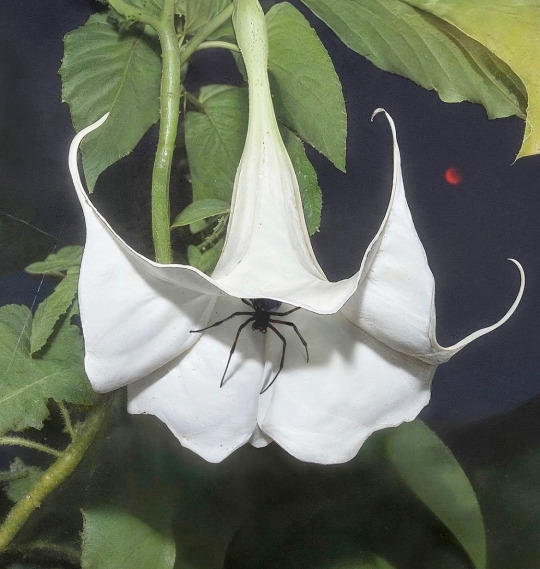
1K notes
·
View notes
Text
Miltassia Orchids Picture 4K Ultra HD Wallpaper
Miltassia Orchids Picture 4K Ultra HD Wallpaper
Allpicts.in – Pictures of flowers are good for desktop background. This is a 4K resolution of the Miltassia orchid, one of the rarest orchids. This orchid picture has 3840×2160 pixels and is suitable for large-size monitors. Feel free to get this image in its original size. You can also download other flower wallpapers by visiting the gallery at the bottom of this article.
Miltassia orchids are…

View On WordPress
#Bratonia orchid#Bratonia orchid wallpaper#Miltassia Orchids Picture#orchid flower#orchid flower wallpaper#orchid wallpaper#spider orchids
0 notes
Text
Round 1 - Phylum Arthropoda

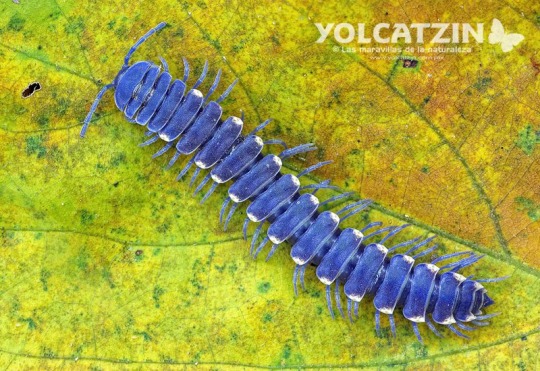


(Sources - 1, 2, 3, 4)
Arthropoda is a phylum of animals that have segmented bodies, possess a chitin exoskeleton, and have paired segmented appendages. They are colloquially called “bugs” though this is often only used for terrestrial arthropods, and sometimes only used for insects specifically.
After Nematoda, this is the most successful phylum, and it is far more diverse, with up to 10 million species! Arthropods account for 80% of all known living animal species. The three major subphyla include the Chelicerates (sea spiders, horseshoe crabs, arachnids, and the extinct eurypterids and chasmataspidids), the Myriapods (centipedes and millipedes), and the Crustaceans (shrimps, prawns, crabs, lobsters, crayfish, seed shrimp, branchiopods, fish lice, krill, remipedes, isopods, barnacles, copepods, opossum shrimps, amphipods, mantis shrimp, entognaths, and insects).
Arthropods are so diverse in fact that it is next to impossible for me to describe a model arthropod. They are important members of marine, freshwater, land, and air ecosystems and are one of only two major animal groups that have adapted to life in dry environments, the others being chordates. All arthropods have an exoskeleton and must molt as they grow, replacing their exoskeleton. Some arthropods go through a metamorphosis in this process. They have brains, a heart, and blood (called hemolymph, though some crustaceans and insects also use hemoglobin). They sense the world through small hairs called setae which are sensitive to vibration, air currents, and even chemicles in the air or water. Pressure sensors function similarly to eardrums. Antennae monitor humidity, moisture, temperature, sound, smell, and/or taste, depending on species. Most arthropods have sophisticated visual systems ranging from simple eyes (ocelli) which orient towards light, to compound eyes consisting of fifteen to several thousand independent ommatidia capable of forming images, detecting fast movement, or even seeing polarized or ultra-violet light. Some arthropods are hermaphroditic, some have more than two sexes, some reproduce by parthenogenesis, some by internal fertilization, some by external, some have complex courtship rituals, some lay eggs, some give live birth, some have prolonged maternal care. The first arthropods are known from the Ediacaran, before the Cambrian era.

Propaganda below the cut:
Insects are the first animals to have achieved flight
The smallest arthropods are the parasitic crustaceans of the class Tantulocarida, some of which are less than 100 micrometres long. The largest arthropod is the Japanese Spider Crab (Macrocheira kaempferi) with a legspan of up to 4 metres (13 ft) long. The heaviest is the American Lobster (Homarus americanus), which can get up to 20 kilograms (44 lb).
Many arthropods are popular pets, including various species of crab, shrimp, isopod, crayfish, mantis shrimp, millipede, centipede, tarantula, true spider, scorpion, amblypygid, vinegaroon, mantis, cockroach, beetle, moth, and ant! Some are even domesticated, including silk moths and honeybees.
Many arthropods are eaten by humans as a delicacy, and farming insects for food is considered more sustainable than farming large chordates. These farmed arthropods are referred to as “minilivestock.”
Arthropods feature in a variety of ways in biomimicry: humans imitating elements of nature. For example, the cooling system of termite mounds has been imitated in architecture, and the internal structure of the dactyl clubs of mantis shrimp have been imitated to create more damage tolerant materials.
Spider venoms are being studied as a less harmful alternative to chemical pesticides, as they are deadly to insects but the great majority are harmless to vertebrates. They have also been studied and could have uses in treating cardiac arrhythmia, muscular dystrophy, glioma, Alzheimer's disease, strokes, and erectile dysfunction.
Shellac is a resin secreted by the female Lac Bug (Kerria lacca) on trees in the forests of India and Thailand. It is used as a brush-on colorant, food glaze, natural primer, sanding sealant, tannin-blocker, odour-blocker, stain, and high-gloss varnish. It was once used in electrical applications as an insulator, and was used to make phonograph and gramophone records until it was replaced by vinyl.
One of the biggest ecosystem services arthropods provide for humans is pollination. Crops where pollinator insects are essential include brazil nuts, cocoa beans, and fruits including kiwi, melons, and pumpkins. Crops where pollinator insects provide 40-90% of pollination include avocados, nuts like cashews and almonds, and fruits like apples, apricots, blueberries, cherries, mangoes, peaches, plums, pears, and raspberries. In crops where pollinators are not essential they still increase production and yield. Important pollinators include bees, flies, wasps, butterflies, and moths.
Many arthropods are sacred to humans. In Ancient Egypt, scarab beetles were used in art, religious ceremonies, and funerary practices, and were represented by the god Khepri. Bees supposedly grew from the tears of the sun god Ra, spilled across the desert sand. The goddess of healing venomous bites and stings, Serket, was depicted as a scorpion. Kalahari Desert's San People tell of a legendary hero, Mantis, who asked a bee to guide him to find the purpose of life. When the bee became weary from their search, he left the mantis on a floating flower, and planted a seed within him before passing from his exhaustion. The first human was born from this seed. In Akan folklore, the cunning trickster figure Anansi/Ananse is depicted as a spider. Western astrology uses the crab constellation, called Cancer, and the scorpion constellation, called Scorpio. Dragonflies symbolize pure water in Navajo tradition. In Anishinaabe culture, dreamcatchers are meant to represent spiderwebs and are used as a protective charm for infants. They originate from the Spider Grandmother, who takes care of the children and the people of the land in many Native American cultures. The Moche people of ancient Peru often depicted spiders and crabs in their art. In an Ancient Greek hymn, Eos, the goddess of the dawn, requests of Zeus to let her lover Tithonus live forever as an immortal. Tithonus became immortal, but not ageless, and eventually became so small, old, and shriveled that he turned into the first cicada. Another hymn sings of the Thriae, a trinity of Aegean bee nymphs. Native Athenians wore golden grasshopper brooches to symbolize that they were of pure, Athenian lineage. In an Ancient Sumerian poem, a fly helps the goddess Inanna when her husband Dumuzid is being chased by galla demons. In Japanese culture, butterflies carry many meanings, from being the souls of humans to symbols of youth to guides into the afterlife. Ancient Romans also believed that butterflies were the souls of the dead. Some of the Nagas of Manipur claim ancestry from a butterfly. Many cultures use the butterfly as a symbol of rebirth. And the list goes on…
cute crab eat a strawbebby:

#round 1#animal polls#listen narrowing it down to just 4 images almost killed me#if arthropods don’t move on to round 2 I will have to take like an extra week off to mourn that I can’t show you all the cool bugs#there’s so many cool bugs guys#i chose the orchid mantis over a trilobite beetle and a poofy little bee fly cause I figured it had broader appeal#and used a horseshoe crab instead of a spider cause people are so Weird about spiders I worried it would impact the numbers#sigh#anyway I’m really hoping for Chordata Arthropoda Mollusca as top three#other phyla are all great but these three would make for the most interesting Round 2 imo
233 notes
·
View notes
Text









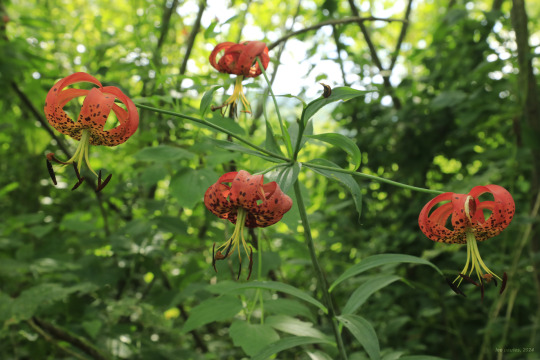










Yet more gifts of Appalachian summer.
I've been on a mission to catalogue as many of Central Appalachia's summer wildflowers and berries as possible for an online project I'm starting up. Above is the haul from yesterday, including the stunning orange-fringed orchid (Platanthera ciliaris), a grand summer orchid of Appalachia's wet seeps and meadows. Downy rattlesnake plantain (Goodyera pubescens), another of our summer-blooming orchids, may not be quite as showy, but its intricately-patterned leaves are quite striking. Turk's-cap lily (Lilium superbum) is also in bloom in our local wet meadows and swamps. It's distinguished from its close cousin Canada lily by more strongly recurved petals and a green, star-like pattern in the center of its flowers. A single Turk's cap lily can produce dozens of flowers from its rangy stems. At home in moist woodland edges and streambanks, summer phlox (Phlox paniculata), sometimes also referred to as fall phlox and garden phlox, produces loads of gorgeous pink or white flowers from mid-July through September. Because this phlox is commonly planted in gardens nowadays, it's hard to know if plants in the wild are true natives or escapees.
#appalachia#vandalia#west virginia#wildflowers#flora#summer#berries#deerberry#black chokeberry#arrowwood viburnum#joe pye weed#summer phlox#fall phlox#garden phlox#turk's-cap lily#hoary skullcap#shrubby st. john's wort#downy rattlesnake plantain#orange-fringed orchid#black eyed susan#spider#arachnid#northern crab spider#fairfax pond-rehe wildlife management area#deckers creek trail#snake hill wildlife management area#cheat river canyon
95 notes
·
View notes
Text
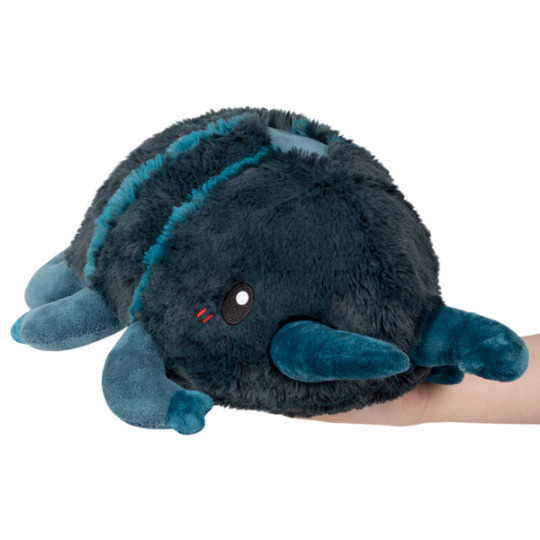
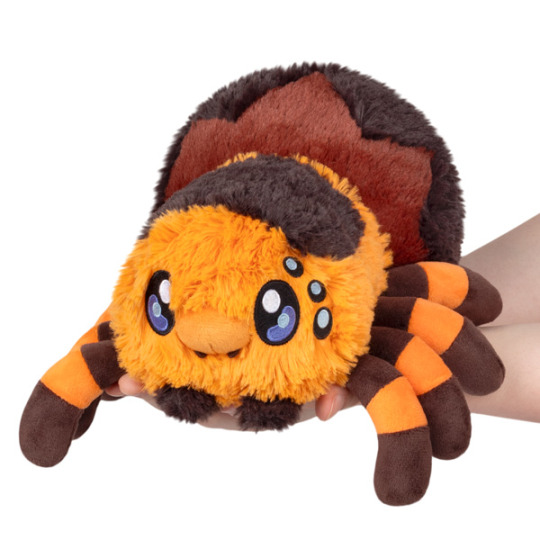



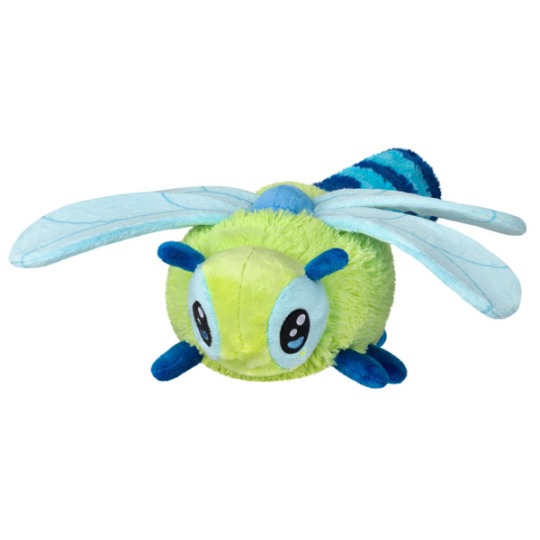
dream Squishable bugs ❤️🌱
🪲 Mini Squishable Stag Beetle
🕷️ Mini Squishable Tarantula
🐛 Squishable Caterpillar
🌷 Mini Squishable Orchid Mantis
🦋 Mini Squishable Monarch Butterfly
🌿 Squishable Dragonfly
#had to fight this post to finally get it up 😭#squishable#bugs#plushblr#plush community#bug plush#beetle plush#spider plush#caterpillar plush#mantis plush#butterfly plush#dragonfly plush#stag beetle#tarantula#caterpillar#orchid mantis#monarch butterfly#dragonfly#oc
125 notes
·
View notes
Text


Albert Krebs. Ophrys holoserica, 1970.
41 notes
·
View notes
Text
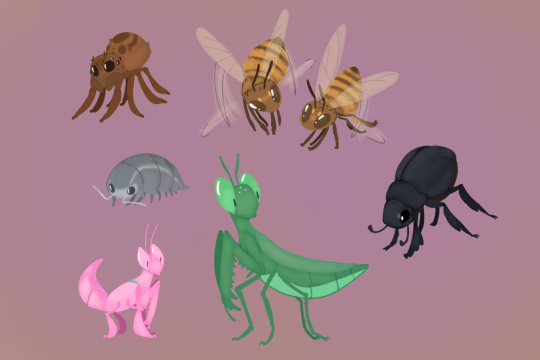
ARTHROPOD HOURS WOOOO
doodling
#insects#arachnids#crustacean#mantis#mantids#praying mantis#orchid mantis#dung beetle#honey bees#isopod#roly poly#pill bug#spider#jumping spider#beetles#bees#arthropods#doodles
76 notes
·
View notes
Text
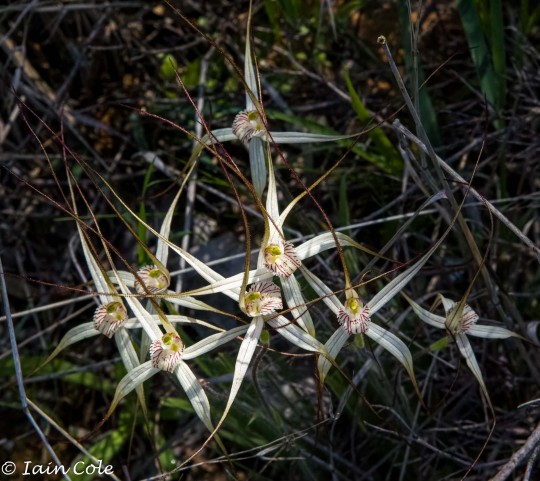
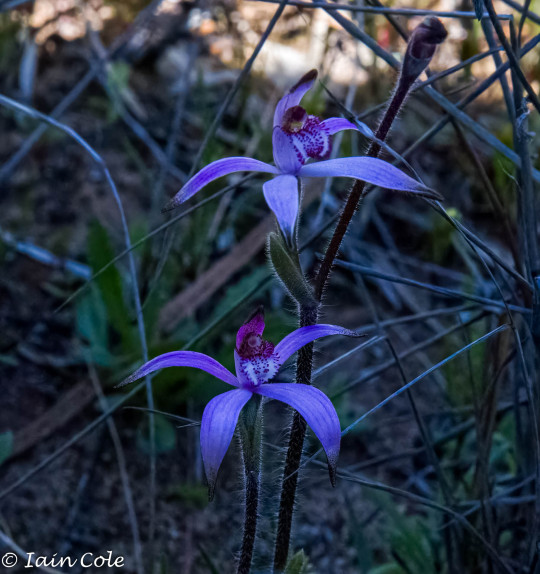




Orchid stands, near Carnamah
On my travels
#original photographers#nature photography#flower photography#wildflowers#orchids#spider orchids#Enamel Orchids#blue silky orchid#Carnamah#on my travels
44 notes
·
View notes
Text

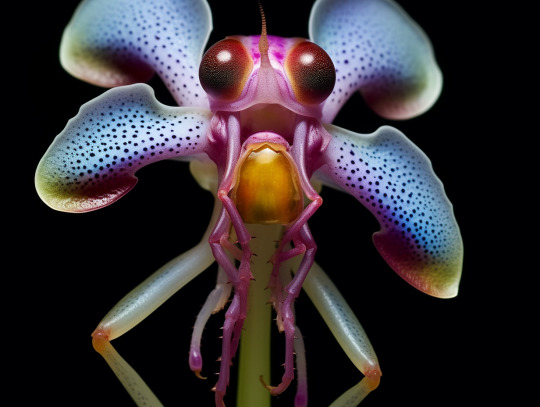
Orachnids
#xeno#biology#astrobiology#imaginary#creature#animal#photo#generative#nonsense#nature lover#exobiology#ideation#inspiration#orchid#spider#arachnid#flower
76 notes
·
View notes
Text

so very small
Worm (Wildbow), Bug Fables
Graphic Depictions Of Violence, Skitter | Weaver | Taylor Hebert, Post-GM, Transmigration, Spiders, Bugs & Insects, Canon-Typical Violence
Taylor Hebert wakes up in the middle of a grassy field with an aching head, a massive blank in her memory, and approximately four more limbs than she remembers having. Approximately, of course, because one of her original four limbs appeared to be gone, and she wasn't sure how to qualify an entire abdomen suddenly spawning off of her backside.
Something ingrained deeply into her skull told her she should be blaming someone, but she couldn't quite remember who.
Author's Note: Bugtober, Day 19 - Mimic. We think that Taylor would be a mimic spider if we swapped her over to BF. We have no major justification for this, but we are open to suggestions if anyone has a better idea, seeing as it's been nearly three years (we think) since we've read Worm and there are likely people on this website who are not operating on three years of character drift.
#our art#bug fables#worm#parahumans#taylor hebert#watercolor#bugtober#finished#what canon is the violence typical for? good question.#losing access to swarm tactics doesnt defang taylor but it Does mean she would have to put in more effort for gore#this is not a real fic and will not be a real fic at any point in the forseeable future btw#in order for us to write a fic we have to have read the source media within at least six months of writing#and we have been procrastinating on rereading worm#this is just a vague idea that came about from discussing what bugs the undersiders would be#generally we agreed she would be a social insect of some description but this is more Fun for the setting#she is a perfectly normal ant. who is normal. and standard.#we have previously drawn taylor approximately Never and we have not figured out mimic spider anatomy with their weirdass two segments#ehh. her disguise is perfectly passable. ants will not bat an eye at her because she smells right and ant eyesight sucks ass#for those wondering on other placements rachel is a weevil lisa is an orchid mantis brian is a ladybug and alec is a parasitoid wasp#we also decided that squealer would be a bombadier beetle. we feel no desire to clarify this decision. take it as you will#we will now fail to post anything even vaguely worm related for approximately five trillion more years
63 notes
·
View notes
Text



Insect!AU
#my art#my ocs#ocs#art#OC: Original#OC: 645 Welsh#OC: False Original#Insect au#Orchid Mantis#jumping spider#deer beetle
24 notes
·
View notes
Text

Brown-Clubbed Spider Orchid, Caladenia phaeoclavia
Wikipedia lists it as endemic to New South Wales, but this is a painting from one I found in Victoria, Australia.
#brown-clubbed spider orchid#spider orchid#caladenia#caladenia phaeoclavia#one breath per day#australia#plants#original art#digital art
7 notes
·
View notes
Text

meet miette "orchid" [insert creams last name here]
creams adopted daughter, she's a peruvian spider monkey, she can stretch her limbs out very far and can read minds
she's 2'3
she's very talkative and carefree, also a bit silly, and very positive, she also loves to make art, but she's also a bit overportective of people she cares about.
#spiritgenie#spiritgenie art#my art#sonic oc#sonic the hedgehog#miette the peruvian spider monkey#orchid the spider monkey#sonic fankid#sonic fanchild#sonic fan character#cream the rabbit
8 notes
·
View notes
Note
23 + Boulwave + Adventure Bots
23 + BoulWave + Adventure Bots
Boulder is a really great mage, a good one if not excellent, fearless of learning and exploring any kind of new place, come one! With a small group and another mage just as excellent as Boulder they could get the power of a really powerful stone, just after saving people and resolving mysteries while running away from a terrible and disgusting metal golem drove by a crazy demon! Everything they could do was even more than excellent and could do even the unimaginable.
Now, after all of that, how was possible they couldn´t even look at a spider? A really tiny spider they could see only because there´s no better optic in all Mainland than theirs! How was possible a single fragging tiny spider (even for a human) didn´t let them get the fragging ingredient they need for the recipe? The cavern wasn´t dark thanks to a hole in the rock-roof that made possible see the orchid they needed, that was already the house of a tiny spider!
Frag! The worst part was that they couldn´t kill it, they were the intruder on the spider´s house! And spiders are actually good for the environment! They were just incapable of making it harm, but they needed that orchid and was really scared of it to even get closer. What should they do?
“Geny?” Boulder could hear from behind “we need that flower, is everything okay?” Heatwave asked to his conjux, stepping aside them, then, seeing the flower in front of them “great, do you find it” Heatwave gave a step-in front, but Boulder grabbed his shoulder and stopped him “what?”
“There´s a spider on it” Heatwave could barely hear, he had to get closer so Boulder could repeat it, of course it was a spider, why other reason there would be for them to take more time than hoped.
“My- Boulder…” Heatwave took his faceplate with his fingers, his error was to look at that terrified newspark-optics only Boulder could do “you know- I´ll kill it for you.”
“No!” Boulder protested “the spider doesn´t have the fault!”
“We need that flower.”
“The spider needs it too!” Boulder took Heatwave´s servo with force, looking at his optics with those really big orange and blue optics, Primus, how not to melt with those optics. Heatwave rolled his optics and sighed.
“Fine, what do we do then?” Boulder tried to think in something, trying to remember the recipe about the flower, Heatwave looked at all the cavern, trying to get a way to reach the orchid by other medium, getting in the act how lucky and smart that spider was, to use the only orchid in kilometers to trap its hungry prey was a horrible but good move, wait, trap it! Sure! “I have an idea!”
…
“Oh! You´re here!” The old, blind woman greeted the bots immediately she felt the shadow of Boulder´s back-neck large bone “what can I smell there? You got it?”
“Yes, we have it, nothing out of normal” Heatwave lowered the long neck of his alt-mode to talk better with the woman “just a scary spider” he chuckled, looking at Boulder through his visor “It´s not the entire flower but we got a lot of petals and also some of its nectar”
“Good! Good! I´ll bring your pay, just wait here” the woman got inside her house in a hurry thanks to what it seemed an ostrich but tinier and blue with a dog belt.
“Really?” Boulder reproach “a scary spider?”
“You jumped when I told you it moved on my hand” Heatwave mocked.
“It wasn´t that scary!”
Heatwave started to laugh, making Boulder turn to him the back plate of their alt-mode like a shield against him, in response, Heatwave started to gently touch tapping at it with his nose like playing with it, and in reply to it, Boulder snorted at him and tried to get him away with their nose-horn. “Stop it! I´m mad at you!”
“But I´m trying to make you feel less mad!” Heatwave excused himself “Come on Geny! There´s no need to feel ashamed!”
“I was scared by a spider!”
“And? I got scared all time when its dark, and you help me! I´m making my part and that´s all” Heatwave again tapped his nose at Boulder´s head horns “come one, we´re safe now, this is the part when you tap me back” Boulder looked at Heatwave seriously, while Heatwave looked at them with a big smile and relaxed lids, yes, Boulder was mad and ashamed, nonetheless, Heatwave´s playful character was like trying to get mad at a puppy, what was they doing by refusing to play? Boulder tapped Heatwave´s cheek plate with their nose horn gently, smiling a little, making Heatwave got closer to grab Boulder´s neck with his like a scarf “Do you feel better now?”
“Better, yes” Boulder replied softly, now tapping Heatwave´s foot with theirs.
#Context: Boulder (mage and triceratops alt mode) and Heatwave (mercenary and sauropod alt mode)#are treasure hunters and make missions for money like DnD adventurers#this one was to reach a flower for an old lady but a spider lives on it and Boulder is TERRIFIED of it#so Heatwave tries to make them feel better#transformers#maccadam#rescue bots#for your page#tf rescue bots#tfrobotsindisguise#tf#tfrb#tfp#tf aligned#transformers fic#tfrb boulder#tfrb heatwave#dnd#tf fic ideas#vaporpunk#orchid#magic
7 notes
·
View notes